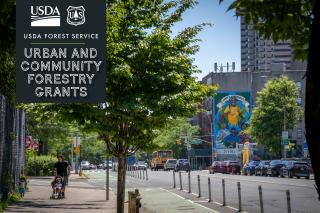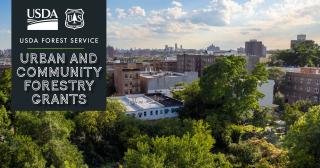Urban Forests
Urban & Community Forestry Inflation Reduction Act Grants

About the 2023 Urban and Community Forestry Grants
Under the Inflation Reduction Act, the Forest Service received a historic $1.5 billion to its Urban and Community Forestry program to support tree-planting, urban forest planning and management, and related activities.
Following a competitive application process, the Forest Service announced more than $1 billion in grants to community-based organizations, local and state governments; agencies and other governmental entities; tribes and tribal organizations; nonprofit organizations; public institutions of higher education; and community-based organizations.
Communities in all 50 states, the District of Columbia, 2 U.S. territories, and 3 affiliated pacific islands are benefitting from this grant funding.
Additionally, the agency has allocated $250 million in funding directly to state and territory forestry agencies to administer grants.
What is Urban Forestry?
What are urban forests?

Over 141 million acres of America’s forests are located right in our cities and towns. Urban forests come in many different shapes and sizes. They include urban parks, street trees, landscaped boulevards, gardens, river and coastal promenades, greenways, river corridors, wetlands, nature preserves, shelter belts of trees, and working trees at former industrial sites. Urban forests, through planned connections of green spaces, form the green infrastructure on which communities depend. Green infrastructure works at multiple scales from the neighborhood to the metro area to the regional landscape.
Why are urban forests important?

Urban forests are more important than ever. They are dynamic ecosystems that provide critical benefits to people and wildlife. Urban forests help to filter air and water, control storm water, conserve energy, and provide animal habitat and shade. They add beauty, form, and structure to urban design. By reducing noise and providing places to recreate, urban forests strengthen social cohesion, spur community revitalization, and add economic value to our communities.
Learn more about our work in urban areas



